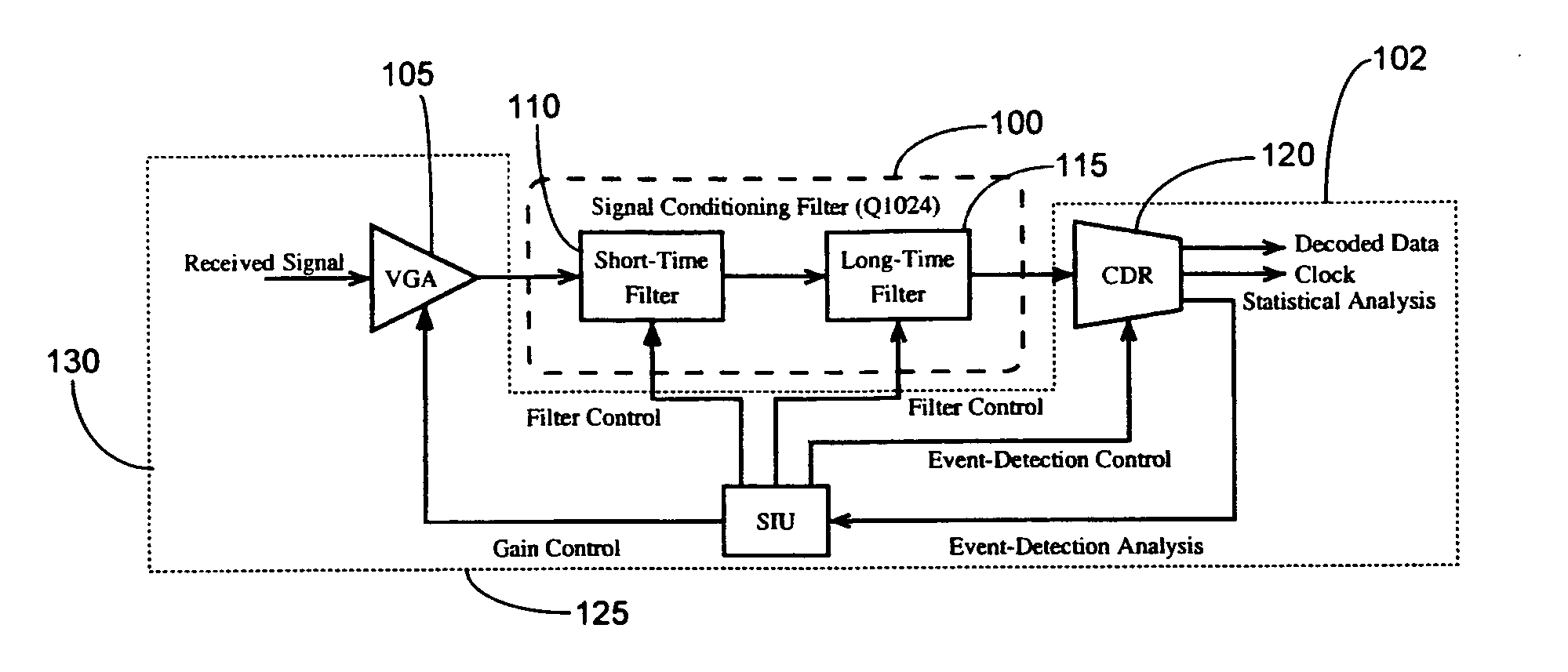Adaptive noise filtering and equalization for optimal high speed multilevel signal decoding
a multi-level signal and adaptive noise technology, applied in the field of communication systems, can solve the problems of affecting the fidelity of the signal communicated, the bandwidth consumption of the network is rising at a rapid rate, and the inability to quickly be inadequate, so as to minimize the number of taps required, effectively combat, and maximize the received fidelity measure
- Summary
- Abstract
- Description
- Claims
- Application Information
AI Technical Summary
Benefits of technology
Problems solved by technology
Method used
Image
Examples
Embodiment Construction
[0049] The present invention can address the problems of equalization and noise filtering in order to improve signal fidelity for decoding. Specifically, a received digital signal can be filtered in a manner to optimize the signal fidelity even in the presence of both large magnitudes of ISI and noise. Furthermore, the method and system of the present invention can be adaptive in the sense that filter coefficients can be continuously updated to reflect any time-varying changes in the channel behavior.
Filter Structure
[0050] Referring now to FIG. 1A, an equalization and filtering system 102 can comprise a variable gain amplifier 105, a signal conditioning filter (SCF) 100, a decoder or clock and data recovery (CDR) unit 120, and a signal integrity unit (SIU) 125. The CDR 120, SIU 125, and VGA 105 can form parts of a signal detection and fidelity characterization circuit 130 as will be discussed below with respect to FIG. 2. The exemplary signal conditioning filter (SCF) 100 can com...
PUM
 Login to View More
Login to View More Abstract
Description
Claims
Application Information
 Login to View More
Login to View More - R&D
- Intellectual Property
- Life Sciences
- Materials
- Tech Scout
- Unparalleled Data Quality
- Higher Quality Content
- 60% Fewer Hallucinations
Browse by: Latest US Patents, China's latest patents, Technical Efficacy Thesaurus, Application Domain, Technology Topic, Popular Technical Reports.
© 2025 PatSnap. All rights reserved.Legal|Privacy policy|Modern Slavery Act Transparency Statement|Sitemap|About US| Contact US: help@patsnap.com



